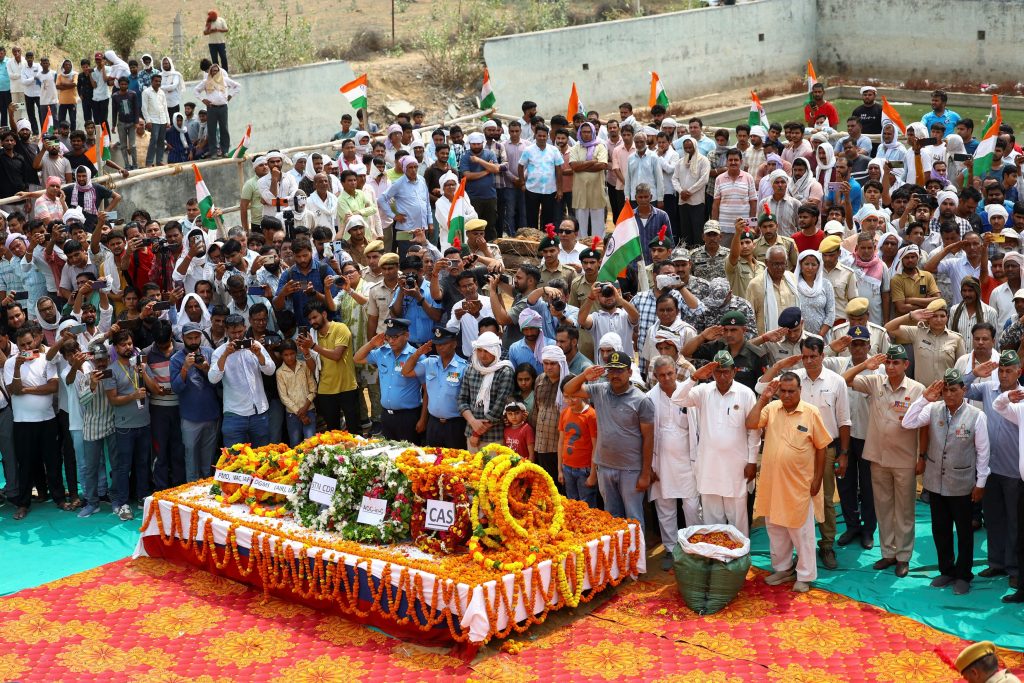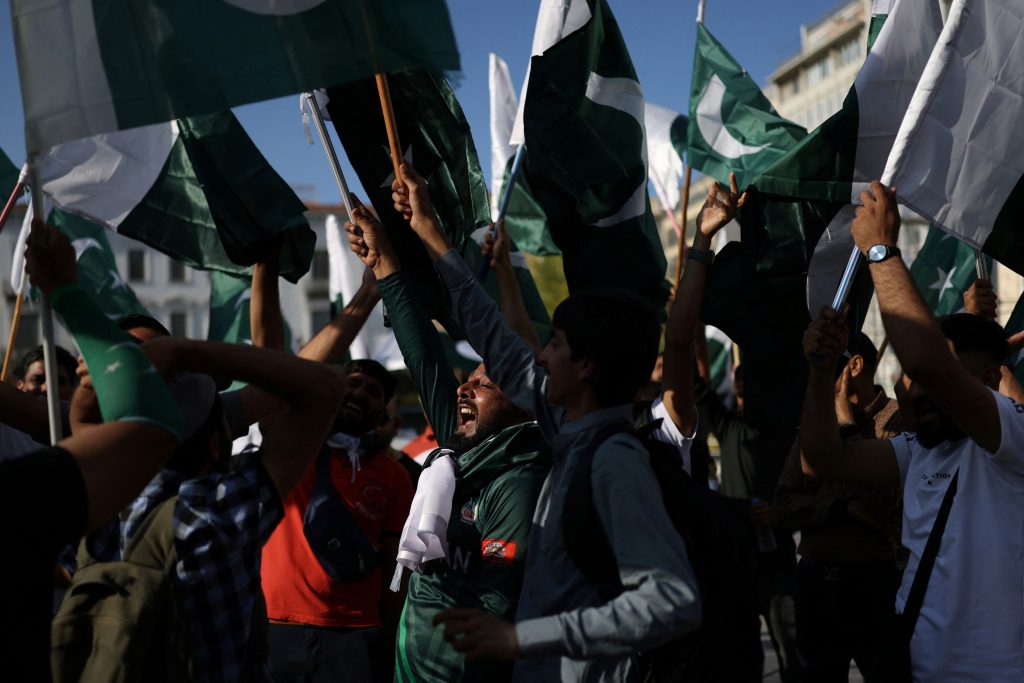A fragile cease-fire between India and Pakistan to halt the worst violence between the two nuclear-armed rivals in years, appeared to hold through the weekend, despite initial accusations by Indian officials that Islamabad had violated the pact.
On Saturday, the pair agreed to stop firing after what President Trump described as a U.S.-brokered deal.
Secretary of State Marco Rubio and Vice President JD Vance led a diplomatic charge to get the two countries to back off from an escalating conflict that the president feared could go nuclear.
Rubio had spoken to his counterparts in both countries Friday, specifically telling them to engage in talks “to avoid miscalculation.”
The cease-fire ended days of clashes in the wake of a militant attack in Indian-administered Kashmir that New Delhi blames on Islamabad. Pakistan denies involvement in the attack.
Top U.S. officials received alarming intelligence Friday, indicating that the conflict between Pakistan and India might spiral out of control, according to a person familiar with the situation.

People pay their last respects to IAF (Indian Air Force) soldier Surendra Kumar who died during an attack on Udhampur, before his cremation on the day of his funeral at his home in Mahradasi village, Jhunjhunu in Rajasthan, India, May 11, 2025. REUTERS/Anushree Fadnavis
Over the past two days, Vance and Rubio took the lead in calling senior officials in India and Pakistan, urging them to end their escalating clashes.
On a Friday call with Indian Prime Minister Narendra Modi , Vance encouraged the leader to consider de-escalation options and outlined some ideas that Pakistan might agree to, according to a person familiar with the situation. Modi didn’t explicitly say he was open to Vance’s peace outline before they hung up.
U.S. officials then continued to call their counterparts in India and Pakistan to ensure that they would stop fighting within a period of 12 to 18 hours.
In a post on his Truth Social network early Saturday, Trump congratulated both countries “on using Common Sense and Great Intelligence.”
U.S. intervention between the two countries has been influential in the past, though political analysts had warned that Washington’s sway over Islamabad had waned in recent years as China pulled Pakistan closer into its orbit.
The U.S. continues to be seen as a trustworthy intermediary by both sides. Political experts were concerned in recent days that Trump wasn’t focused enough on the risk of another major war breaking out in the world as he turned his attention to trade deals following tariff announcements in early April.
Doubts about the durability of the cease-fire arose hours after it was supposed to go into effect, when Indian Foreign Secretary Vikram Misri said Pakistan had repeatedly broken the truce.
“This is a breach of the earlier understanding arrived at today,” he said. “The armed forces are giving an adequate and appropriate response.”
Pakistan denied violating the agreement.

People chant slogans as they rallying in support of Pakistan Army, day after the ceasefire announcement between India and Pakistan, in Lahore, Pakistan, May 11, 2025. REUTERS/Mohsin Raza
Rubio said that both countries agreed to talks on the broader issues affecting their relations. The Indian Foreign Ministry, however, denied that further talks are planned.
India and the U.S. have drawn significantly closer in recent years amid increased tensions with China.
Husain Haqqani , senior fellow at Hudson Institute and a former Pakistan ambassador to the U.S., said Washington’s intervention was key.
“The two sides have no trust whatsoever,” he said. “When the two protagonists have absolute mistrust, then the role of a major power acting as a broker in a cease-fire then is primarily to help be the provider of that trust to keep either side from panicking.”
However, Tamanna Salikuddin, a former director for Afghanistan and Pakistan at the National Security Council under the Obama administration, said that the U.S. appears to underestimate the difficulty ahead in making a cease-fire stick. Tensions between Pakistan and India are exacerbated by bellicose rhetoric by leaders on both sides of the border who want to consolidate support at home and show off what they think are upgraded militaries.
The U.S., meanwhile, has let its own influence as a mediator in the region atrophy, she said, noting that the Trump administration hasn’t yet appointed ambassadors to New Delhi or Islamabad.
Last week, India launched what it called retaliatory strikes for the militant attack last month in its part of Kashmir that left 26 people dead. Pakistan said it shot down Indian jets involved in those strikes. India hasn’t commented on the allegation.
Until the latest flare-up, India and Pakistan had maintained a frosty peace as both sides focused on internal issues, and India largely followed a strategy of not engaging with Pakistan.

Pakistani nationals living in Greece celebrate at a central Athens square, following the ceasefire between India and Pakistan, in Athens, Greece, May 11, 2025. REUTERS/Stelios Misinas
But the first direct clashes in years—including the use of new types of weapons and claims by Pakistan that it downed Indian jet fighters—risked the simmering conflict between them erupting into a full-blown war.
India has said the militants involved in the Kashmir attack last month belong to Lashkar-e Taiba, a U.S.-designated terrorist organization based in Pakistan that carried out the 2008 Mumbai attacks .
India accuses Pakistan of backing the militants. Pakistan has denied any involvement in the April attack.
Political analysts initially expected the latest hostilities to follow the pattern of a similar confrontation in 2019 when, following a deadly attack on security personnel in the part of Kashmir it governs, India launched a strike over the border that it said targeted what it described as Pakistani terror camps. Pakistan responded at that time by shooting down an Indian jet fighter. The tit-for-tat de-escalated after Islamabad repatriated the pilot.
But this time, both countries deployed types of weapons they haven’t used against each other before, such as drones and loitering munitions in large numbers, making the outcome more unpredictable.
The cease-fire represented a win for the Trump administration. Bringing the recent fighting between India and Pakistan to a halt demonstrated the power Washington retains to influence global conflicts.
Kashmir was divided between India and Pakistan in 1947 during the partition of the Indian subcontinent, but both countries claim the Himalayan region in full. They have fought three wars over the territory, the most recent one in 1999.
Write to Tripti Lahiri at [email protected] and Alexander Ward at [email protected]




